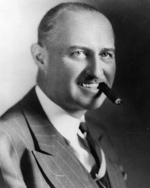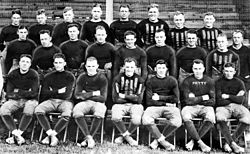| September 26, 1920 |
|---|
| Visitor | Score | Home | Score | Location |
|---|
| St. Paul Ideals† | 0 | Rock Island Independents (1–0–0) | 48 | Douglas Park |
| October 3, 1920 |
|---|
| Wheeling Stogies† | 0 | Akron Pros (1–0–0) | 43 | Akron League Park |
| West Buffalo† | 6 | Buffalo All-Americans (1–0–0) | 32 | Canisius Field |
| Pitcairn Quakers † | 0 | Canton Bulldogs (1–0–0) | 48 | Lakeside Park |
| Columbus Panhandles (0–1–0) | 0 | Dayton Triangles (1–0–0) | 14 | Triangle Park |
| Moline Universal Tractors † | 0 | Decatur Staleys (1–0–0) | 20 | Staley Field |
| Muncie Flyers (0–1–0) | 0 | Rock Island Independents (2–0–0) | 45 | Douglas Park |
| All-Buffalo† | 0 | Rochester Jeffersons (1–0–0) | 10 | Rochester Baseball Park |
| October 10, 1920 |
|---|
| Columbus Panhandles (0–2–0) | 0 | Akron Pros (2–0–0) | 37 | Akron League Park |
| All-Buffalo† | 0 | Buffalo All-Americans (2–0–0) | 51 | Canisius Field |
| Toledo Maroons † | 0 | Canton Bulldogs (2–0–0) | 42 | Lakeside Park |
| Racine Cardinals (0–0–1) | 0 | Chicago Tigers (0–0–1) | 0 | Cubs Park |
| Cleveland Tigers (0–0–1) | 0 | Dayton Triangles (1–0–1) | 0 | Triangle Park |
| Kewanee Walworths † | 7 | Decatur Staleys (2–0–0) | 25 | Staley Field |
| Cleveland Panthers † | 14 | Detroit Heralds (1–0–0) | 40 | Mack Park |
| Hammond Pros (0–1–0) | 0 | Rock Island Independents (3–0–0) | 26 | Douglas Park |
| Fort Porter † | 0 | Rochester Jeffersons (2–0–0) | 66 | Rochester Baseball Park |
| October 17, 1920 |
|---|
| Cincinnati Celts† | 0 | Akron Pros (3–0–0) | 13 | Akron League Park |
| McKeesport Olympics † | 7 | Buffalo All-Americans (3–0–0) | 28 | Canisius Field |
| Cleveland Tigers (0–1–1) | 0 | Canton Bulldogs (3–0–0) | 7 | Lakeside Park |
| Moline Universal Tractors† | 3 | Racine Cardinals (1–0–1) | 33 | St. Rita's Field |
| Detroit Heralds (1–1–0) | 0 | Chicago Tigers (1–0–1) | 12 | Cubs Park |
| Columbus Panhandles (0–3–0) | 0 | Fort Wayne Friars † | 14 | Fort Wayne League Park |
| Hammond Pros (0–2–0) | 0 | Dayton Triangles (2–0–1) | 44 | Triangle Park |
| Decatur Staleys (3–0–0) | 7 | Rock Island Independents (3–1–0) | 0 | Douglas Park |
| Utica Knights of Columbus† | 0 | Rochester Jeffersons (2–0–1) | 0 | Rochester Baseball Park |
| October 24, 1920 |
|---|
| Cleveland Tigers (0–2–1) | 0 | Akron Pros (4–0–0) | 7 | Akron League Park |
| Toledo Maroons† | 0 | Buffalo All-Americans (4–0–0) | 38 | Canisius Field |
| Canton Bulldogs (3–0–1) | 20 | Dayton Triangles (2–0–2) | 20 | Triangle Park |
| Racine Cardinals (1–1–1) | 0 | Rock Island Independents (4–1–0) | 7 | Douglas Park |
| Decatur Staleys (4–0–0) | 10 | Chicago Tigers (1–1–1) | 0 | Cubs Park |
| Columbus Panhandles (0–4–0) | 0 | Detroit Heralds (2–1–0) | 6 | Mack Park |
| Syracuse Stars† | 7 | Rochester Jeffersons (3–0–1) | 21 | Rochester Baseball Park |
| October 31, 1920 |
|---|
| Akron Pros (5–0–0) | 10 | Canton Bulldogs (3–1–1) | 0 | Lakeside Park |
| Rochester Jeffersons (3–1–1) | 6 | Buffalo All-Americans (5–0–0) | 17 | Canisius Field |
| Detroit Heralds (2–2–0) | 0 | Racine Cardinals (2–1–1) | 21 | Cubs Park |
| Chicago Tigers (1–2–1) | 7 | Rock Island Independents (5–1–0) | 20 | Douglas Park |
| Columbus Panhandles (0–5–0) | 0 | Cleveland Tigers (1–2–1) | 7 | Dunn Field |
| Cincinnati Celts † | 7 | Dayton Triangles (3–0–2) | 23 | Triangle Park |
| Decatur Staleys (5–0–0) | 29 | Rockford A.C.† | 0 | Kishwaukee Park |
| Hammond Pros (1–2–0) | 14 | Logan Square† | 9 | Logan Square Park |
| November 7, 1920 |
|---|
| All-Tonawanda Lumberjacks † | 0 | Buffalo All-Americans (6–0–0) | 35 | Canisius Field |
| Canton Bulldogs (4–1–1) | 18 | Cleveland Tigers (1–3–1) | 0 | Dunn Field |
| Racine Cardinals (3–1–1) | 6 | Chicago Tigers (1–3–1) | 3 | Cubs Park |
| Columbus Panhandles (1–5–0) | 10 | Zanesville Mark Grays † | 0 | Zanesville, Ohio |
| Decatur Staleys (5–0–1) | 0 | Rock Island Independents (5–1–1) | 0 | Douglas Park |
| Hammond Pros (2–2–0) | 14 | Pullman Thorns† | 13 | Chicago, Illinois |
| Utica Knights of Columbus† | 7 | Rochester Jeffersons (4–1–1) | 27 | Rochester Baseball Park |
| November 11, 1920 |
|---|
| Decatur Staleys (6–0–1) | 20 | Champaign Legion† | 0 | Champaign, Illinois |
| Rock Island Independents (5–1–2) | 7 | Thorn Tornadoes† | 7 | Monmouth, Illinois |
| November 14, 1920 |
|---|
| Akron Pros (5–0–1) | 7 | Cleveland Tigers (1–3–2) | 7 | Dunn Field |
| Columbus Panhandles (1–6–0) | 7 | Buffalo All-Americans (7–0–0) | 43 | Canisius Field |
| Chicago Tigers (1–4–1) | 0 | Canton Bulldogs (5–1–1) | 21 | Lakeside Park |
| Cincinnati Celts† | 0 | Racine Cardinals (4–1–1) | 21 | Chicago, Illinois |
| Dayton Triangles (4–0–2) | 21 | Rock Island Independents (5–2–2) | 0 | Douglas Park |
| Decatur Staleys (7–0–1) | 3 | Minneapolis Marines † | 0 | Nicollet Park |
| Detroit Heralds (2–2–1) | 0 | Fort Wayne Friars† | 0 | Fort Wayne League Park |
| Hammond Pros (2–3–0) | 6 | Gary Elks † | 7 | Gleason Field |
| All-Tonawanda Lumberjacks† | 6 | Rochester Jeffersons (4–2–1) | 0 | Rochester Baseball Park |
| November 21, 1920 |
|---|
| Dayton Triangles (4–1–2) | 0 | Akron Pros (6–0–1) | 13 | Akron League Park |
| Canton Bulldogs (6–1–1) | 3 | Buffalo All-Americans (7–1–0) | 0 | Canisius Field |
| Lansing Oldsmobile † | 0 | Racine Cardinals (5–1–1) | 14 | Chicago, Illinois |
| Toledo Maroons† | 0 | Cleveland Tigers (2–3–2) | 14 | Dunn Field |
| Columbus Panhandles (1–6–1) | 0 | Zanesville Mark Grays† | 0 | Zanesville, Ohio |
| Hammond Pros (2–4–0) | 7 | Decatur Staleys (8–0–1) | 28 | Staley Field |
| Rochester Scalpers † | 0 | Rochester Jeffersons (5–2–1) | 16 | Rochester Baseball Park |
| November 25, 1920 |
|---|
| Canton Bulldogs (6–2–1) | 0 | Akron Pros (7–0–1) | 7 | Akron League Park |
| Decatur Staleys (9–0–1) | 6 | Chicago Tigers (1–5–1) | 0 | Chicago Cub Park |
| Columbus Panhandles (1–6–2) | 0 | Elyria Athletics † | 0 | Lorain, Ohio |
| Detroit Heralds (2–3–1) | 0 | Dayton Triangles (5–1–2) | 28 | Triangle Park |
| Hammond Pros (2–5–0) | 0 | Chicago Boosters † | 27 | DePaul Field |
| All-Tonawanda Lumberjacks † (2–1–0) | 14 | Rochester Jeffersons (5–3–1) | 3 | Rochester Baseball Park |
| November 28, 1920 |
|---|
| Akron Pros (8–0–1) | 14 | Dayton Triangles (5–2–2) | 0 | Triangle Park |
| Cleveland Tigers (2–4–2) | 0 | Buffalo All-Americans (8–1–0) | 7 | Buffalo Baseball Park |
| Decatur Staleys (9–1–1) | 6 | Racine Cardinals (6–1–1) | 7 | Normal Park |
| Thorn Tornadoes† | 0 | Chicago Tigers (2–5–1) | 27 | Cubs Park |
| Lansing Oldsmobile† | 0 | Detroit Heralds (2–3–2) | 0 | Mack Park |
| Rochester Scalpers† | 6 | Rochester Jeffersons (6–3–1) | 7 | Rochester Baseball Park |
| Pittsburgh All-Collegians † | 7 | Rock Island Independents (6–2–2) | 48 | Douglas Park |
| December 4, 1920 |
|---|
| Canton Bulldogs (6–3–1) | 3 | Buffalo All-Americans (9–1–0) | 7 | New York Polo Grounds |
| December 5, 1920 |
|---|
| Akron Pros (8–0–2) | 0 | Buffalo All-Americans (9–1–1) | 0 | Buffalo Baseball Park |
| Canton Bulldogs (6–3–2) | 0 | Washington Glee Club † | 0 | New Haven, Connecticut |
| Racine Cardinals (6–2–1) | 0 | Decatur Staleys (10–1–1) | 10 | Cubs Park |
| Columbus Wagner Pirates † | 0 | Columbus Panhandles (2–6–2) | 24 | Neil Park |
| Detroit Maroons † | 7 | Detroit Heralds (2–3–3) | 7 | Mack Park |
| Rochester Scalpers† | 0 | Rochester Jeffersons (6–3–2) | 0 | Exposition Park |
| December 11, 1920 |
|---|
| Canton Bulldogs (6–4–2) | 7 | Union Club of Phoenixville † | 13 | Phillies Park |
| December 12, 1920 |
|---|
| Akron Pros (8–0–3) | 0 | Decatur Staleys (10–1–2) | 0 | Cubs Park |
| December 18, 1920 |
|---|
| Canton Bulldogs (7–4–2) | 39 | Richmond Athletics † | 0 | Boulevard Field |
| December 19, 1920 |
|---|
| Racine Cardinals (6–2–2) | 14 | Chicago Stayms † | 14 | Pyott Field |







